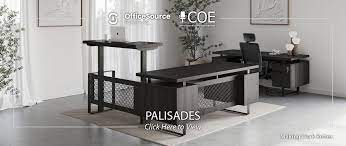Furniture Placement Magic: Optimizing Your Room’s Layout
The arrangement of furniture within a room is like a puzzle—a puzzle that, when solved, can transform a space into a harmonious and functional environment. Furniture placement isn’t just about aesthetics; it’s about maximizing space, flow, and purpose. Unlock the magic of furniture placement as we delve into the art of optimizing your room’s layout. From creating focal points to fostering conversation, this guide will help you orchestrate your office furniture arrangement to achieve a well-balanced and inviting space.
Define Your Goals
Before rearranging your furniture, clarify your goals for the room. Is it a cozy living space for entertaining, a serene oasis for relaxation, or a functional home office? Identifying the purpose of the room will guide your furniture placement decisions.

Map the Space
Measure the dimensions of your room and create a rough map. Include doors, windows, and architectural features. This visual representation will help you experiment with furniture arrangements without the heavy lifting.
Identify Focal Points
Every room has a natural focal point—a fireplace, a large window with a view, or a piece of artwork. Design your furniture layout around this focal point to create a visual anchor that enhances the room’s overall appeal.
Consider Traffic Flow
Arrange furniture to facilitate easy movement through the room. Avoid obstructing pathways, and ensure there’s ample space to walk comfortably without bumping into furniture. A clear traffic flow contributes to the functionality of the space.
Group for Conversation
If the room is meant for socializing, group furniture pieces to foster conversation. Position sofas and chairs facing each other, creating cozy arrangements that encourage interaction. Avoid placing furniture too far apart, as it can hinder communication.
Balance and Symmetry
Achieve balance by distributing furniture evenly throughout the room. Symmetry creates a sense of visual harmony, while asymmetry can add an element of intrigue. Aim for equilibrium by balancing larger furniture items with smaller accents.
Scale and Proportion
Furniture should be proportionate to the size of the room. Oversized furniture in a small space can feel overwhelming, while undersized pieces in a large room may appear lost. Ensure that furniture maintains a comfortable and harmonious scale.
Utilize Vertical Space
Don’t forget about vertical space. Use wall shelves, bookcases, and wall-mounted storage to free up floor space and keep the room organized. Vertical elements also draw the eye upward, adding depth to the room.
Experiment and Refine
Don’t be afraid to experiment with different furniture arrangements. Try multiple layouts to find the one that works best for your space and goals. Take your time to refine the arrangement until it feels just right.
Personal Touches
Once you’ve optimized your furniture layout, infuse the room with personal touches. Incorporate artwork, accessories, and textiles that reflect your style and create a warm and inviting atmosphere.
Furniture placement is a blend of science and art, where the arrangement of pieces can truly transform a room. By identifying focal points, considering traffic flow, creating conversational groupings, and striking a balance between symmetry and asymmetry, you can orchestrate your room’s layout to optimize both function and aesthetics. As you experiment and refine your arrangement, you’ll discover the magic of furniture placement—how a well-organized space can breathe life into your room and enhance your daily living experience.

Leave a Reply